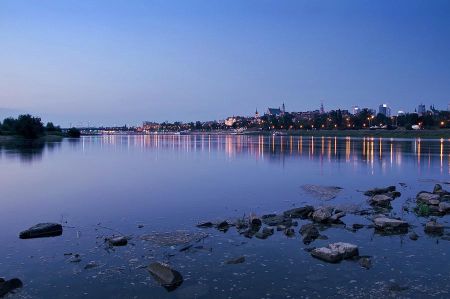Amber - Ancient Amber Road along the Vistula River
- Written by Portal Editor
Our first visit to Warsaw also brought us to the banks of the Vistula, the river that, over large parts of its length, also accompanies the course of one of the most important amber roads from the Roman Empire via the Moravian Gate and its mouth into the Baltic Sea.
Over 2,000 years ago there were the first written records by Roman authors describing the Vistula River, who also described the amber trading centre of Turso.
Amber and its importance for trade
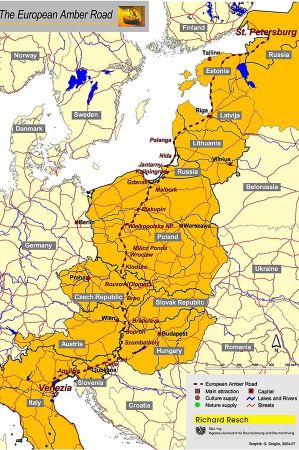 However, as early as the Bronze Age, Baltic amber was a valuable object of exchange and trade that reached as far south as possible.
However, as early as the Bronze Age, Baltic amber was a valuable object of exchange and trade that reached as far south as possible.
In the Mycenaean period (around 1600 to 1050 BC), jewellery made from imported amber was worn in Greece, as shown by a number of finds from this period. In the Iron Age, amber regained its importance as the Phoenicians, Greeks, Scythians, Egyptians, Balts and Slavs valued it as “tears of the sun” or “tears of the gods”.
Later it was thought to be “lynx urine”, “petrified honey” or “solidified petroleum”. It was also referred to as “Gold of the North” or “Tears of the Sun Daughters”. It was of great importance in the sun cults of the time, as it appears to glow from within due to bumps and cracks.
Aquileia trading centre in today's Italy
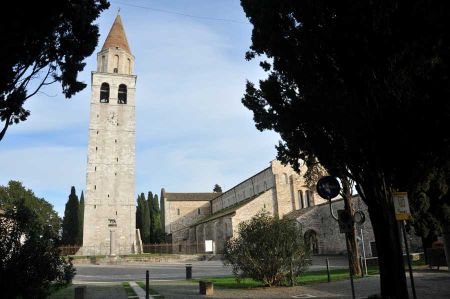 The amber trade routes are still referred to as amber routes today, although they were not only dedicated to the amber trade. They run in bundles south to the Mediterranean:
The amber trade routes are still referred to as amber routes today, although they were not only dedicated to the amber trade. They run in bundles south to the Mediterranean:
For example, in the important trading centre of Aquileia: Pliny the Elder reports that amber was brought to Aquileia from the Baltic Sea coast. The amber trade route, which was already important in prehistory, follows the March in Lower Austria, crosses the Danube near the Roman town of Carnuntum east of Vienna and from here leads as the Roman amber road via Hungary and Slovenia to Aquileia in Italy. As an important transport route, it was expanded at the beginning of the 1st century AD under Augustus and Tiberius and connected to the Roman road network; there is an important collection of Roman amber objects in the Archaeological Museum, Aquileia.
Amber becomes a gemstone in the commercial metropolises
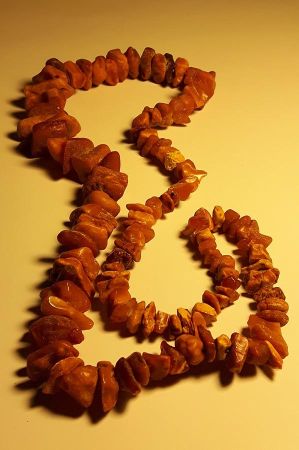 The Greeks valued amber as a gemstone, which they used as a medium of exchange for all kinds of luxury goods, as mentioned and described by Homer.
The Greeks valued amber as a gemstone, which they used as a medium of exchange for all kinds of luxury goods, as mentioned and described by Homer.
The Romans also used it as a medium of exchange and for engravings.
In Greco-Roman antiquity it was recognized that amber could become electrostatically charged. The Greek philosopher Aristotle interpreted the origin of amber as plant sap and mentioned the occurrence of zooincluses. Pytheas of Massalia had on one of his journeys around 334 BC. BC reached the so-called Amber Islands (probably meaning the West, East and North Frisian Islands in the North Sea).
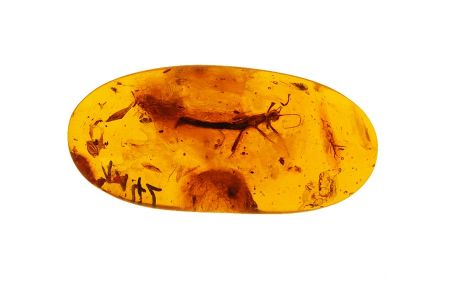 This is probably why these islands are called the Electrids. The Romans Tacitus and Pliny the Elder wrote about amber and its origins and trade. Emperor Nero is said to have used amber in large quantities for representational purposes.
This is probably why these islands are called the Electrids. The Romans Tacitus and Pliny the Elder wrote about amber and its origins and trade. Emperor Nero is said to have used amber in large quantities for representational purposes.
In Rome during the imperial period, not only the emperor but also the people indulged in lavish luxury with amber.
People drank from amber vessels, it adorned everything of value, and wealthy women dyed their hair amber. Pliny the Elder criticizes that a small amber figurine is more expensive than a slave. In Roman antiquity, the trade in Samland amber was also developed.
In 44 AD, in the third book of Chorographia (3.27), Pomponius Mela named the Vistula (Vistula) as the border between Germania and Sarmatia.
The Vistula is playing an increasingly important role
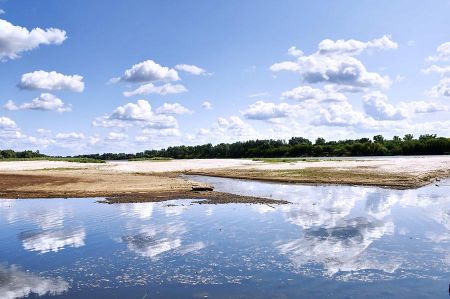 Pliny the Elder explicitly named two names in his Natural History (4.52; 4.89) around 77 AD: “Visculus sive Vistla”. The Vistla River therefore flowed into the Mare Suebicum, which is now known as the Baltic Sea.
Pliny the Elder explicitly named two names in his Natural History (4.52; 4.89) around 77 AD: “Visculus sive Vistla”. The Vistla River therefore flowed into the Mare Suebicum, which is now known as the Baltic Sea.
Pliny also described the Vistula as the border river between the Germanic and Sarmatian areas of influence. Pliny referred to the East Germans living in the Vistula region at the time as Vandili (Vandals) and named Burgodiones (Burgundians), Varinnae, Charini and Gutones (Goths) as sub-tribes.
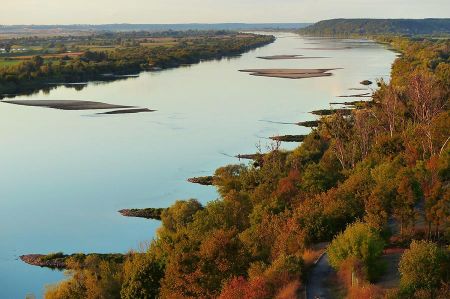 The Goths had only settled on the lower and middle Vistula in the last century before the turn of the era, but they began to migrate again around 200 AD and can no longer be found there from the 5th century onwards.
The Goths had only settled on the lower and middle Vistula in the last century before the turn of the era, but they began to migrate again around 200 AD and can no longer be found there from the 5th century onwards.
Apart from the migration movements, the names also changed: in his Germania, Tacitus referred to the Aesti or Aisti who lived east of the mouth of the Vistula (probably synonymous with today's name Balts) as Germanic people, but pointed out that they spoke a language similar to British (Celtic). speak and distinguished them from the Suebi.
Please also read:
